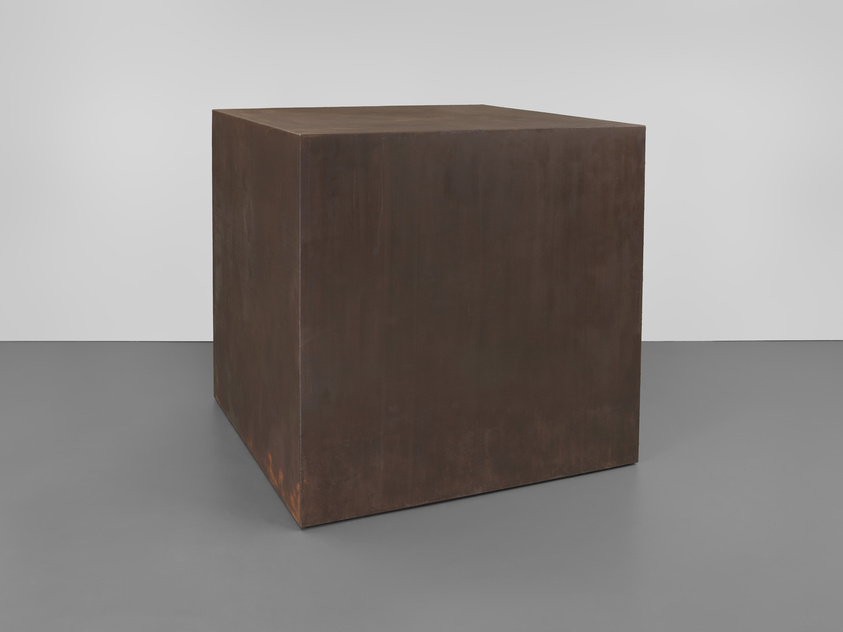The size and form of Tony Smith’s Die, a 6-foot steel cube, was inspired by the Italian Renaissance master Leonardo da Vinci’s famous drawing of the Vitruvian Man, which shows the ideal proportions of the human figure set within the perfect geometry of a circle and a square. Hollow and raised off the floor so that all twelve edges are visible, Die’s dimensions imply those of the body, while its sheer volume suggests the form of a monument or tomb. Rich in allusions, the title Die and the work’s dimensions suggest a pun related to the chance roll of the dice, but also, most obviously, an allusion to death. As Smith noted, “six feet has a suggestion of being cooked. Six foot box. Six feet under.” Since Smith worked in a tool and die shop, Die also evokes the perforated block used to punch holes or blanks out of sheet metal. Thus, the title points not only to a method of fabrication, but to the idea that the sculpture, a massive form which punctures its surroundings, might be seen as a hole or void, displacing rather than occupying space.
Not on view
Date
1962
Classification
Sculpture
Medium
Steel
Dimensions
Overall: 72 3/8 × 72 3/8 × 72 3/8in. (183.8 × 183.8 × 183.8 cm)
Accession number
89.6
Edition
3
Credit line
Whitney Museum of American Art, New York; purchase, with funds from the Louis and Bessie Adler Foundation, Inc., James Block, The Sondra and Charles Gilman, Jr. Foundation, Inc., Penny and Mike Winton, and the Painting and Sculpture Committee
Rights and reproductions
©Estate of Tony Smith/Artists Rights Society (ARS), New York



